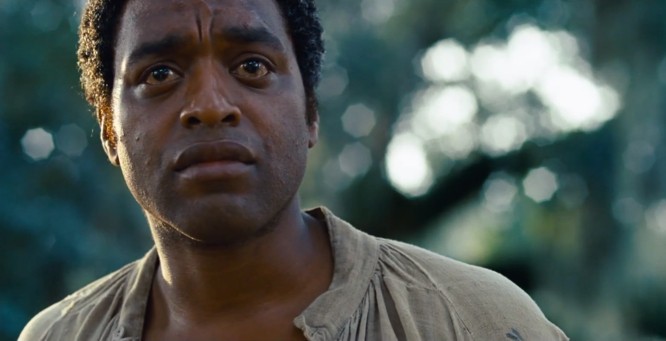Last week I caught up with Oscar nominated film, 12 Years A Slave. The intense narrative of Solomon Northup, freeman kidnapped and taken to the South, is an exceptional story accompanied by exceptional cinematography. Sean Bobbitt shot the film, and is notable for his professional relationship with Steve McQueen, having filmed the director’s previous works Shame and Hunger. Strangely enough, I haven’t seen a single one of his other works, but having seen 12 Years A Slave, I would certainly be interested in seeking them out.
The cinematography of 12 Years a Slave blends contemporary techniques with a historical story, and in that element it’s quite unique. The film opens with an extended shot of slaves waiting for an induction; it hovers on these waiting moments, drawing out the indeterminable time that Solomon himself will remain a slave. It captures these waiting periods well – and later in the film, the waiting periods become the most dramatic scenes of the movie.
The film was shot on an ArriCam LT with Cook S4, and superbly captures the candlelight scenes on film. Bobbitt uses extremely shallow depth of focus to shoot many of the scenes, focussing the story on Solomon’s personal transformation from freeman to slave. The film is inter cut with shots of the trees in the Mississippi Delta, where the languid leaves float in the wind, reinforcing the slow passage of time. 12 years feels like a lifetime in these extended moments.
I highly recommend seeing the film before reading further – it’s certainly my pick for winning the Best Picture, followed closely by the magnificent Philomena. Once you’ve seen it, read on! I’ve picked my four favourite scenes to analyse:
Waiting to hang

Solomon Northup resists a white slaver and is left hanging for an entire day. It was an extremely bold choice to devote so much time to this shot, but the gamble pays off. While Solomon dangles on his tip-toes, trying to stay alive, life goes on behind him; the previously mentioned shallow depth of focus comes into play here, where those behind him go on with daily life, just out of focus. The only people in focus are the slavers; the wife who comes to watch on the deck and then walk away. The young girl who risks punishment to feed him water. Behind him, slaves do laundry, trying to ignore his suffering. The editing and cinematography makes the audience feel like they are constantly circling him, like the slaves behind, wanting to do something to help but unable to leave their seats.
The night interrogation

Bobbitt’s use of candlelight in the film is reminiscent of Barry Lyndon by Stanley Kubrick. But the most exceptional use of this is Edwin Epps’s interrogation of Solomon over a letter – intense through the extremely good acting by Michael Fassbender and Chiwetel Ejiofor. This scene uses the light from a lantern to illuminate their faces; all around them is the dark of the night, the only light comes from the candle held by Epps. It marks a turning point to Solomon, where he resigns himself to slavery. It’s a challenge to shoot in such low light, but it is done superbly, capturing the warm yellow tones and the extremely rich black shadows.
The whipping
The climax of the film, where Solomon is forced to whip Patsey, is notable for its use of hand held cameras in a single shot. I didn’t even realise at the time of watching that it was one shot, because I was too focussed on the intense emotion of the scene. Then, after reading about the film, I realised that there weren’t any cuts in the image. The camera gets right into the moment, capturing every stroke of the whip on Patsey’s bleeding back. But it does something quite remarkable too – while pushing into the moment, the camera remains invisible to the viewer, because it takes on the actions of a bystander.
The family reunion
When Solomon finally returns to his family (and the audience breathes a sigh of relief), the scene focusses on his face. What is remarkable is his gradual break down; it captures his shame of leaving his family, his need to apologise for what has happened, the tears on his face – it’s hard not to shed a tear when faced with these raw emotions. But the film pulls its most emotional cue in the last shot, where the camera pulls in close to the family circle, and we’re there for the final moment, feeling a part of this circle of solidarity and love. After the intensity of 12 Years A Slave, we all need a group hug!
There are some great interviews and articles in the news about Sean Bobbitt’s cinematography for 12 Years A Slave. I suggest you check out: Salon: “12 Years a Slave” cinematographer says film brought him to tears – which has information on Sean Bobbitt’s work as a war photographer, which certainly comes into play in this film.

Share your thoughts